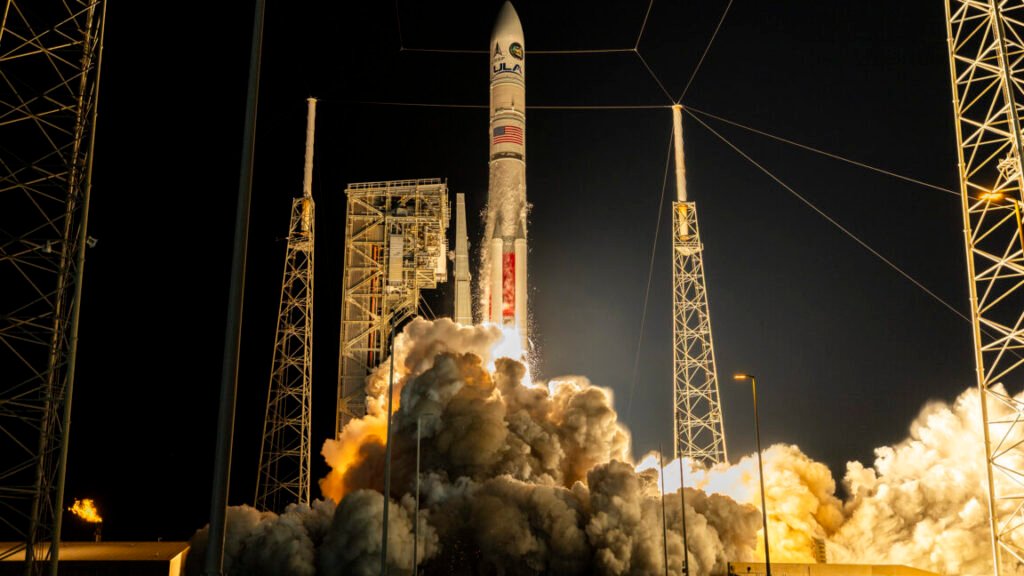A SpaceX Falcon Heavy rocket with NASA’s Psyche spacecraft launches from NASA’s Kennedy Space Center in Florida on October 13, 2023.
Credit:
Chandan Khanna/AFP via Getty Images
The launch orders announced Friday comprise the second batch of NSSL Phase 3 missions the Space Force has awarded to SpaceX and ULA.
It’s important to remember that these prices aren’t what ULA or SpaceX would charge a commercial satellite customer. The US government pays a premium for access to space. The Space Force, the National Reconnaissance Office, and NASA don’t insure their launches like a commercial customer would do. Instead, government agencies have more insight into their launch contractors, including inspections, flight data reviews, risk assessments, and security checks. Government missions also typically get priority on ULA and SpaceX’s launch schedules. All of this adds up to more money.
A heavy burden
Four of the five launches awarded to SpaceX Friday will use the company’s larger Falcon Heavy rocket, according to Lt. Col. Kristina Stewart at Space Systems Command. One will fly on SpaceX’s workhorse Falcon 9. This is the first time a majority of the Space Force’s annual launch orders has required the lift capability of a Falcon Heavy, with three Falcon 9 booster cores combining to heave larger payloads into space.
All versions of ULA’s Vulcan rocket use a single core booster, with varying numbers of strap-on solid-fueled rocket motors to provide extra thrust off the launch pad.
Here’s a breakdown of the seven new missions assigned to SpaceX and ULA:
• USSF-149: Classified payload on a SpaceX Falcon 9 from Florida
• USSF-63: Classified payload on a SpaceX Falcon Heavy from Florida
• USSF-155: Classified payload SpaceX Falcon Heavy from Florida
• USSF-205: WGS-12 communications satellite on a SpaceX Falcon Heavy from Florida
• NROL-86: Classified payload on a SpaceX Falcon Heavy from Florida
• USSF-88: GPS IIIF-4 navigation satellite on a ULA Vulcan VC2S (two solid rocket boosters) from Florida
• NROL-88: Classified payload on a ULA Vulcan VC4S (four solid rocket boosters) from Florida

